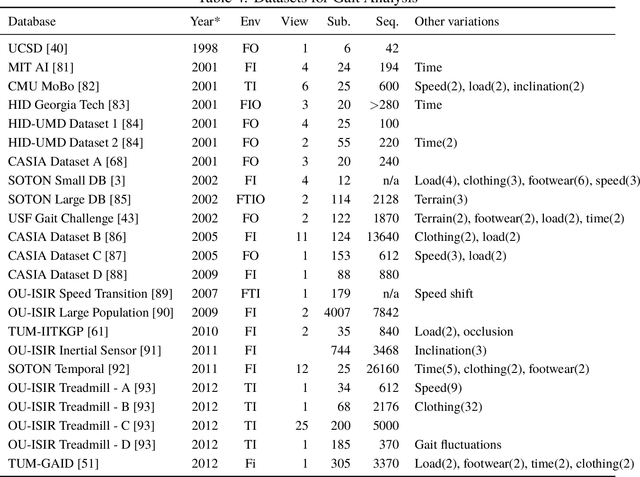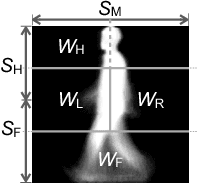Srinivasan Rajagopalan
Trait of Gait: A Survey on Gait Biometrics
Mar 26, 2019



Abstract:Gait analysis is the study of the systematic methods that assess and quantify animal locomotion. The research on gait analysis has considerably evolved through time. It was an ancient art, and it still finds its application today in modern science and medicine. This paper describes how one's gait can be used as a biometric. It shall diversely cover salient research done within the field and explain the nuances and advances in each type of gait analysis. The prominent methods of gait recognition from the early era to the state of the art are covered. This survey also reviews the various gait datasets. The overall aim of this study is to provide a concise roadmap for anyone who wishes to do research in the field of gait biometrics.
View-invariant Gait Recognition through Genetic Template Segmentation
Jul 03, 2017



Abstract:Template-based model-free approach provides by far the most successful solution to the gait recognition problem in literature. Recent work discusses how isolating the head and leg portion of the template increase the performance of a gait recognition system making it robust against covariates like clothing and carrying conditions. However, most involve a manual definition of the boundaries. The method we propose, the genetic template segmentation (GTS), employs the genetic algorithm to automate the boundary selection process. This method was tested on the GEI, GEnI and AEI templates. GEI seems to exhibit the best result when segmented with our approach. Experimental results depict that our approach significantly outperforms the existing implementations of view-invariant gait recognition.
* Published in IEEE Signal Processing Letters. Received April 24, 2017, revised June 6, 2017, accepted June 10, 2017, published June 14, 2017
 Add to Chrome
Add to Chrome Add to Firefox
Add to Firefox Add to Edge
Add to Edge